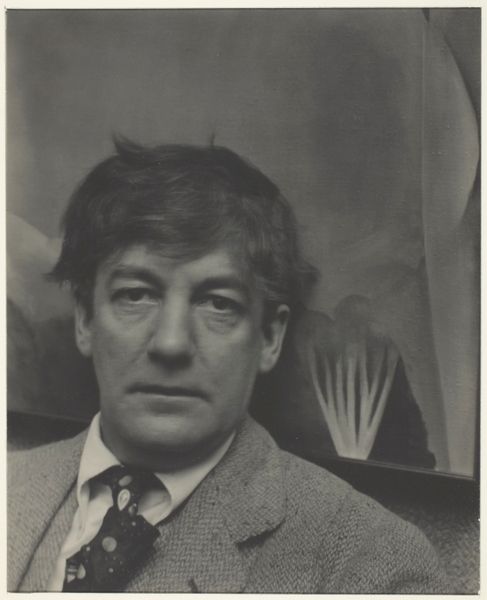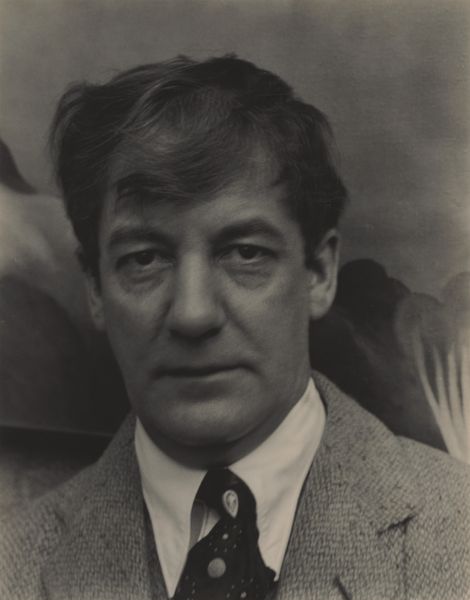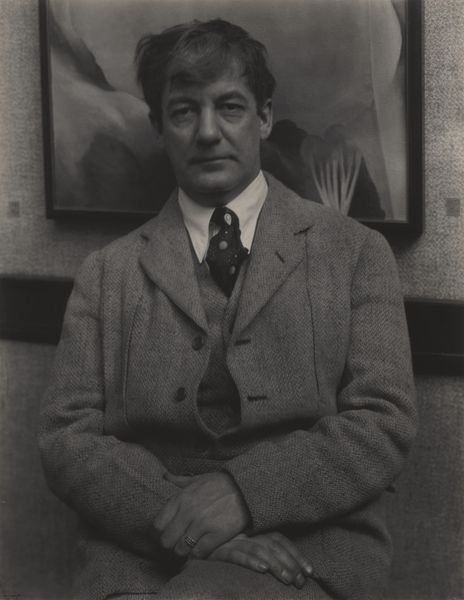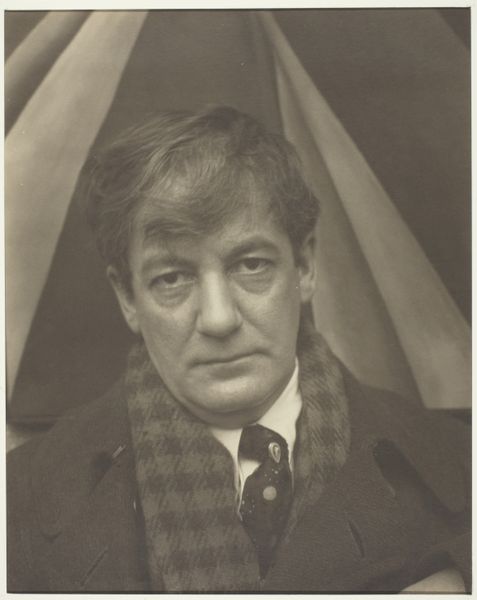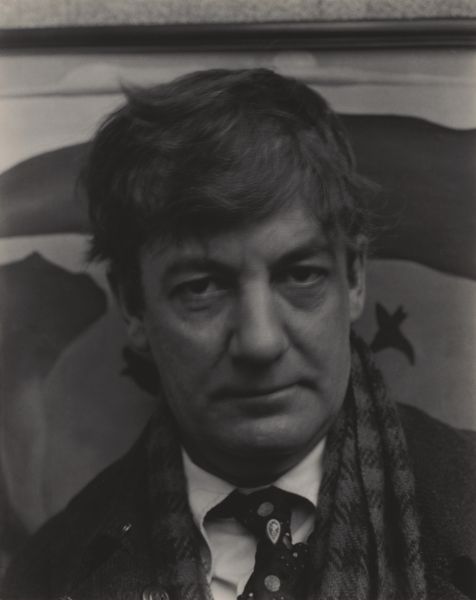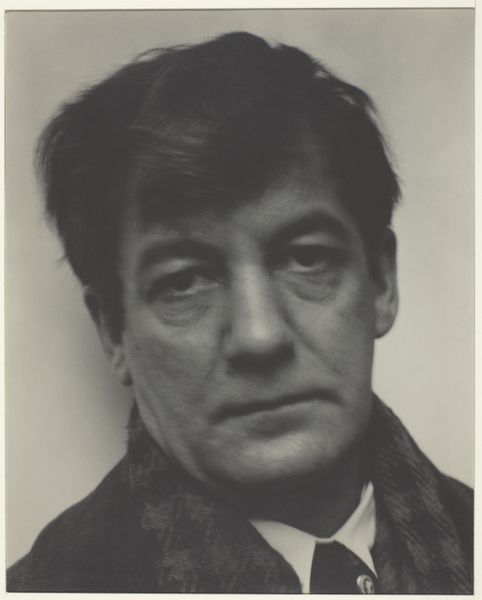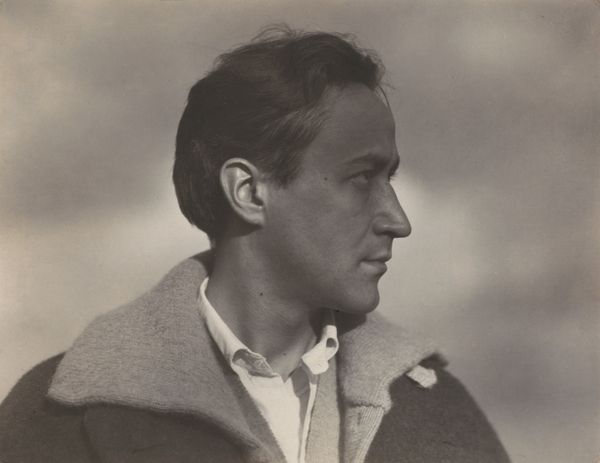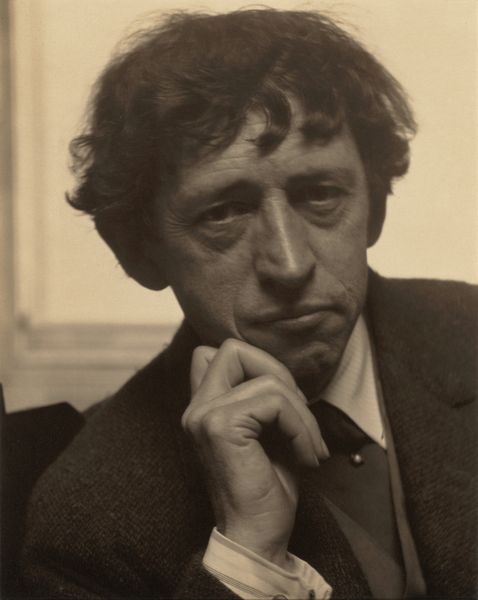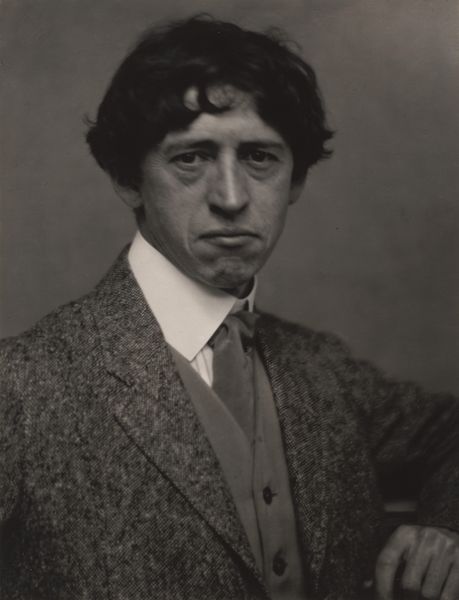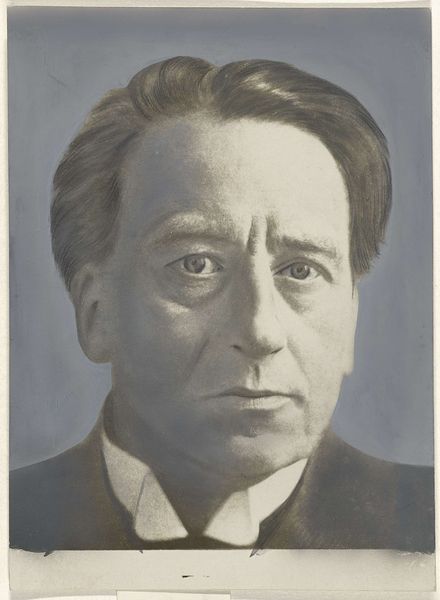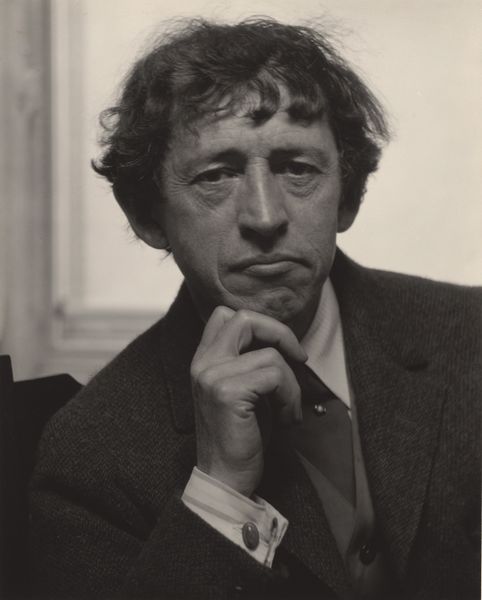
silver, paper, photography, gelatin-silver-print
#
portrait
#
silver
#
paper
#
photography
#
historical photography
#
gelatin-silver-print
#
modernism
Dimensions: 19.4 × 24.3 cm (image/paper/first mount); 56.6 × 46.5 cm (second mount)
Copyright: Public Domain
Editor: Here we have Alfred Stieglitz’s gelatin silver print, *Sherwood Anderson*, taken in 1923. It strikes me as such an intimate portrait. The focus is so sharp on Anderson’s face, yet his expression seems weary, almost resigned. What layers of context can you peel back for us? Curator: Stieglitz's work, particularly this portrait, plays a vital role in understanding the development of modern art in America. But who had access to Stieglitz’s work at the time, and who was actively excluded from these conversations? This portrait of Anderson, exhibited in Stieglitz’s gallery, became part of a visual language understood by a relatively small circle, signifying a certain intellectual and artistic avant-garde. Do you think the soft-focus background drawing by Georgia O’Keefe behind Anderson, contributes to this effect? Editor: Definitely! It adds this air of artistic mystique, like we're being granted a peek into a very specific, perhaps exclusive, world. It feels like there’s a deliberate construction of an artistic persona going on here. Curator: Precisely! Stieglitz was very intentional about crafting images, and thereby influencing how his subjects and his artistic circle were perceived. Think about how galleries operated then—spaces of gathering, discussion, and the formation of taste. This image participates in that environment; it wasn't just about capturing a likeness. It was a deliberate act of image-making within a specific social and institutional context. How do you think that impacts our viewing of it today? Editor: It makes me consider the power dynamics at play. Whose voices were amplified, and whose were suppressed in shaping the narrative of American modernism? And how are those echoes still present in the art world today? Curator: Exactly. Stieglitz’s work serves as a valuable lens for understanding the intricate relationship between art, power, and representation, not just within his immediate circle, but in shaping broader cultural narratives. Editor: This has shifted my perspective quite a bit; I am now considering this picture to have been an intentional construction of identity, privilege and exclusivity within the Modernist milieu, instead of a simple, straightforward portrait. Curator: Indeed! Recognizing those dynamics is crucial to appreciating not just Stieglitz, but the forces that continue to shape the art world we navigate today.
Comments
No comments
Be the first to comment and join the conversation on the ultimate creative platform.
